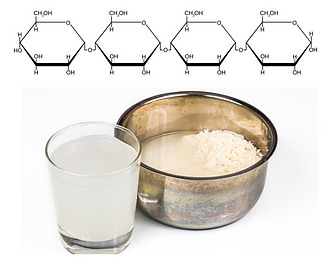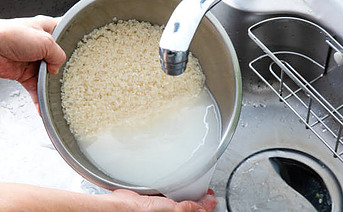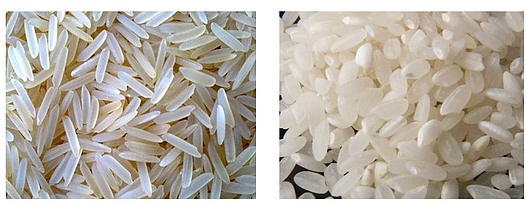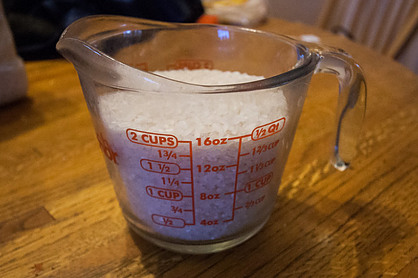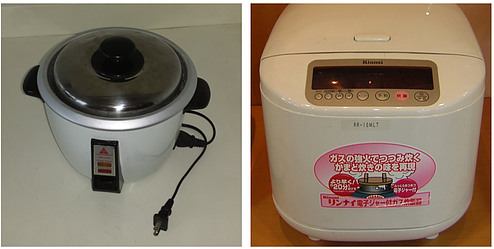People who use a rice cooker may face a problem, rice cooker bubbles over and spits.
During the rice cooking process, the rice bubbles like soap and lifts up the rice cooker’s lid, and escapes from the pot.
End up leaving a mess around the rice cooker.
This problem is common among rice cooker users, but you still can avoid this problem.
Here I am going to discuss why rice cooker bubbles over and spit, let’s see how these could help you solve the bubbles problem.
Table of Contents
Why is my rice cooker bubbles over and spits?
Rice cooker bubbles over and spits due to rice starch experiencing gelatinization when mixed with boiling water and forming a viscous water which looks like gel, then the boiling process generates gas and forms bubbles which look like soap. When steam pressure inside the rice cooker gets stronger and temperature increases, the bubbles will expand and lift up the rice cooker’s lid, then escaping from the rice cooker. Rice cooker may bubbles over and spits if you are not washing the rice properly before cooking, the rice grain that you use come with high starch content, using the rice cooker with over capacity, putting the wrong water to rice ratio, and rice cooker’s lid is light which is easily lifted by steam.
What is rice starch?
Rice contains starch which is coated on its surface.
Starch is a natural polymer consisting of glucose molecules in two forms, which are amylose and amylopectin.
Plants create starch to store the glucose that is produced during photosynthesis.
Starch is a source of energy which is stored in plants.
Foods that are rich with starch are rice, potato, corn, tapioca, and etc.
Starch is white in color, odorless, and insoluble with water (because it is polymer).
Starch gelatinization process and forming of soapy bubbles.
Starch will undergo gelatinization when mixed with water and applied with heat.
When starch mix with hot water, the starch granule will absorb water and swell (expanding),
Continuous heat supply makes the starch granule absorb more water and keep expanding until it bursts.
When starch granules burst, the water inside the rice cooker will become viscous, the water looks like gel or paste.
As the water in the rice cooker boils, gas bubbles will form and rise to the top and form a soapy looking bubble inside the rice cooker (because of starch gelatinization).
During the boiling process, hot steam will be generated and build up pressure inside the rice cooker, the temperature increasing as well.
The bubbles inside the rice cooker will expand and rise to the top.
When the steam pressure is strong enough to lift the rice cooker’s lid, the bubbles will escape and spit to the surrounding.
But Is it normal that the rice cooker bubbles over and spits?
My answer is: It is normal if the points below are not doing well, let’s see.
Rice grains not properly washed before cooking.
Rice grains are coated with a layer of starch when you just buy it.
The layer of starch that actually causes bubbles in the rice cooker.
The more the starch on the rice grains surface, the more bubbles will be created in the rice cooker when cooking.
To avoid the rice cooker bubbling over, it is recommended before starting cooking rice, please wash the rice carefully to remove the starch.
Use clean water to rinse the raw rice, and you will find out the rinsed rice water becomes white cloudy. Pour away the cloudy water and repeat a few times until the rinsed water becomes clear, meaning most of the starch is already removed.
You are using rice with high starch content.
Long grain rice contains less starch compared to short grain rice.
Examples of long grain rice are Jasmine and basmati, it is drier and not likely to stick to each other (fluffy texture) after cooking.
Short grain rice refers to Japanese rice or Japonica rice, the most common type of rice in Japan, which is sticky after cooking, commonly used to make sushi.
Using long grain rice to cook will lower the chance of the rice cooker bubbling over.
You use a rice cooker with over capacity.
Another thing to pay attention to is the rice cooker capacity.
If the rice cooker bubbling problem keeps annoying you, maybe it is time to read the user manual again
I guess most people haven’t read the user manual for electric appliances since the first day they bought it.
If you threw the user manual already, try to download it online by Google, it should be available.
Check what is the capacity of the rice cooker that you bought.
For example, from the manual it states the rice and water shall not exceed ⅘ of the inner pot capacity.
Depending on the rice types you want to cook, some rice expand easily, maybe the capacity cannot exceed more than ⅗.
When you put rice and water more than the inner pot capacity, the water surface will be nearer to the rice cooker lid, and this will cause the rice cooker bubbling over (over boiling).
You put the wrong rice to water ratio.
The excess of water in the rice cooker also will cause bubbling over the problem.
You need to carefully control the water to rice ratio.
Normally each rice cooker is equipped with a rice measuring cup when you buy it.
This is a designated measuring cup, you got to use it for rice measurement.
When you want to cook 3 cups of rice, make sure you add in the water until scale 3 (the scales marked on the pot’s inner side).
Do not use another cup for measuring rice, it may cause excess water added into the rice cooker and cause bubbling over.
You are using a rice cooker with a light lid.
Another reason that contributes to rice cooker bubbling over may be due to the rice cooker’s lid.
Rice cooker with locking lid and without locking lid.
One is expensive (locking lid) and one is cheaper.
One rice cooker comes with a lid with a hinge and a locking mechanism, a lid attached to the rice cooker body.
Another one rice cooker simply has a round shaped lid and is put on top of the rice cooker, no locking mechanism and hinge, it is independent and not attached to the rice cooker.
The bubbling over problem that you are facing now is probably because you are using a type of rice cooker without the locking lid, simply a light lid without attachment to the rice cooker.
When a strong steam pressure starts to build within the rice cooker, more bubbles are created and expanding, then raising to the top of the rice cooker.
The rice cooker’s lid vent hole is not big enough to ease the build up steam pressure.
Once the steam pressure is greater than the weight of the lid, the steam will lift the lid and the bubbles will escape through the gap (the rim of the inner pot).
The lid’s vent hole totally does not function to release the steam.
When the lid dropped back to the pot, the starchy water splattered to the rice cooker surrounding it.
Suggest to use a heavy object put on the lid and let the steam released through the vent hole. If this method works, you may find a strong stream of steam coming out from the vent hole.
Another method is to tilt the lid a little bit to let the hot steam escape from the gap for lowering the pressure and the temperature, but this method may affect the rice cooking quality as the hot steam is also part of the rice cooking process.
Final thought
Let’s say you had tried the methods above but still facing the rice cooker bubbles over and spits problems, maybe it is time to change to a new rice cooker.
Maybe some of the rice cooker’s components are already faulty and cause the cooking temperature to be too hot.
I am suggesting to get yourself a good quality rice cooker (normally price higher), a digital rice cooker.
Get a rice cooker with a lid that is attached to the rice cooker and with a locking mechanism.
Probably the new rice cooker is able to solve the problem that has been disturbing you for years.
